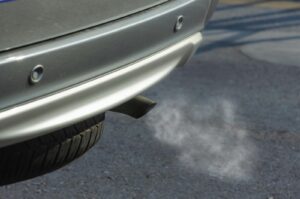London hospitals to benefit from air quality monitors
Ten hospitals in some of the London areas most blighted by air pollution are set to be equipped with new air quality monitors, City Hall has confirmed.
The monitors will measure toxic air levels to protect the health of London’s hospital staff and patients, who are more vulnerable than most to air pollution’s harmful effects.
The monitors will give health professionals real-time information to help them advise colleagues and patients, measure the impact of measures they take to improve air quality and better understand how air pollution and certain health conditions interact.
St. Bartholomew’s Hospital has already been installed with one of the monitors, with others set to be installed at hospitals such as the Royal London, Whipps Cross and Great Ormond Street Hospital (GOSH).
The Mayor of London Sadiq Khan said: ‘Vulnerable hospital patients are more susceptible to the harmful effects of our toxic air pollution health crisis that harms lung growth and is linked to asthma, cancer and dementia.
‘I am working with London’s leading hospitals to install air pollution monitors and help find new ways to reduce pollution and protect patients.’
The initiative comes after a recent study by Kings College London and the UK Health Alliance on Climate Change found that 60% of hospitals and NHS facilities in inner London are in areas that exceed air pollution limits.
The Clean Air Hospital Framework, published by GOSH and Global Action Plan earlier this month, recommended installing air quality monitors at NHS sites.
The monitors form part of Khan’s Breathe London project which is aiming to create the world’s biggest air quality monitoring network in the heart of the UK’s capital.
Matthew Shaw, chief executive of GOSH, said the hospital is ‘delighted’ to be part of the Breathe London project.
Shaw said: ‘As a specialist children’s hospital, we see a number of patients in our hospital who are impacted by air quality.
‘The ability to get real time air quality data will mean patients and staff will be able to make informed decisions about how they can help reduce their exposure to poor quality air.’
Aside from the Breathe London project, Khan’s main step to improve London’s air quality will come in the form of the city’s first Ultra Low Emissions Zone (ULEZ), which will take effect on April 8th.
The world’s first 24-hour seven-day-a-week ULEZ will charge vehicles entering central London’s congestion charge zone each day if they do not meet emissions standards.
City Hall says that the ULEZ will help clean London’s air and reduce nitrous oxide emissions caused by road traffic in central London by up to 45%.












